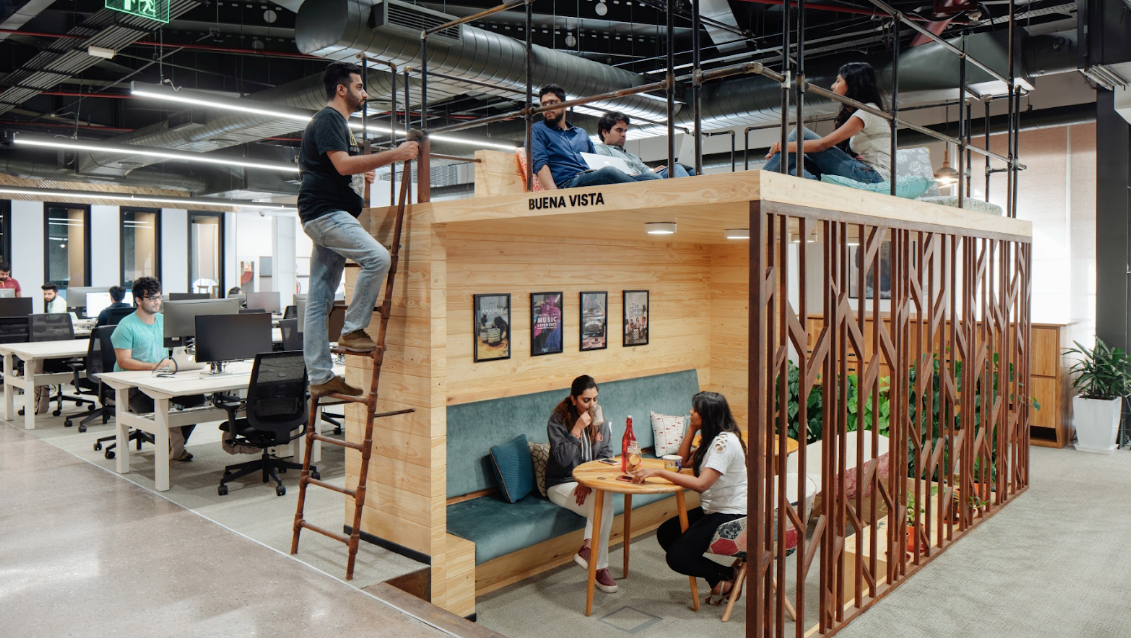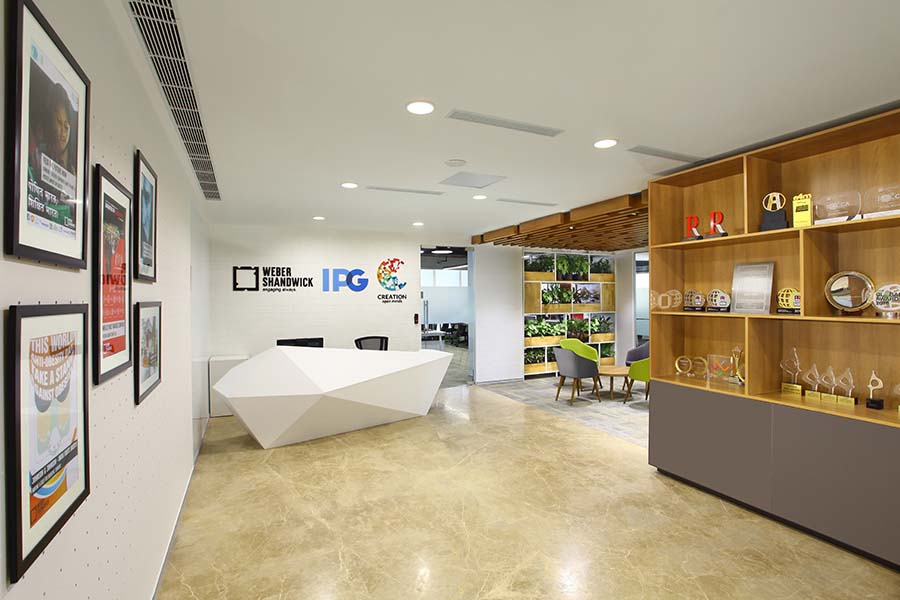
Featured project: LinkedIn, Bangalore
5 startup office design elements that help companies gear up for success
Breakfast meetings and product launches, pulling off all-nighters and enjoying happy hour with colleagues – working in a startup is more than just a job, it is a lifestyle in itself. Getting to work on something one is truly passionate about, collaborating with people who become more family than colleagues, and doing it all from a space that exudes coolness and vivacity, are just some of the reasons younger employees thrive in startups.
Designing for startups and the lifestyle they espouse thus is a very different ball game. One needs to cater to the fast-evolving work styles, constantly on work days and the collaborative workforce that characterise startups. Here are some important office design elements that are essential to startup offices.
Flexible office design
Startups by nature are dynamic entities, and their needs may change dramatically, even within a single year. It is not unusual for a 10-person firm to triple its headcount in just a few months, or scale down their operations based on their performance. Many startups also work with teams of freelancers and part-time employees who drop by the office only a couple of days a week. While a firm may eventually move to a bigger space to accommodate a steadily growing workforce, some degree of flexibility is desirable to accommodate more immediate variations in headcount.
Since most modern startups break down traditional hierarchies, they prefer open plan offices. But rather than undefined open areas, companies today are more mindful of how that space can be made more flexible and functional. One great way to do this is by including operable walls that can be dragged along a track. These walls can be opened up to create a larger space to accommodate more people, or drawn shut to section off an area into a private meeting room. Flexible seminar rooms are another fantastic option for startups. A large seminar room is great for meetings with all hands on deck. But a flexible design would allow these large spaces to be converted into multiple small rooms for day-to-day meetings when required.

Airbnb, Gurgaon
Housed in a large industrial warehouse, Airbnb’s office in Gurgaon, offers multiple flexible spaces to work from. For instance, the stepped seating area is ideal to host larger team events and town halls – but it can also be used by smaller groups for informal discussions. Another example is the sunken collaboration area beneath the rooftop multi-functional zone, which can be used for team brainstorming sessions, one-on-one meetings and even a casual chat.
Activity-based design
Job roles are also constantly evolving at a startup. In a small team, a single individual may find themselves being involved in sales meetings, working on website designs and driving the marketing strategy, all in one day. It becomes unfeasible to perform such varied tasks from a single work desk.
thebridge by Ascendas-Singbridge, Singapore
Activity-based working options are extremely helpful in a startup office design. Since a new firm may not have sprawling acres at its disposal, hot-desking is a more economical use of the space available, rather than assigned seating. Giving employees a variety of environment options empowers them to work in comfort and enjoy better workplace productivity. Cosy work nooks with bean bags and cushions are good for focussed tasks while open café-like setups or work clusters are ideal for team discussions. Phone booths are a great addition to a startup office – they are quirky, they take up minimal space and are extremely functional for calls and teleconferences.
Common spacesLong hours and working weekends are a regular part of startup culture, so it is important to bond with the people one works with. The common spaces where people talk, eat and relax are thus, as important in a startup as the work areas.
While Uber today has operations all around the world, it still remains true to its startup values and puts a strong focus on workplace engagement. When we designed Uber’s headquarters in Singapore, we incorporated various spaces within the office that would enhance the human experience. The swanky cafeteria is one such space where people can chat over a hot beverage or share a meal together. The buzzing cafeteria leads on to the games room that has been designed to exude the charm of an Asian village. This is where employees can break a sweat at the table tennis table, work off their energy by challenging colleagues to a game of foosball, or simply sit at the comfy ottomans for a friendly catch-up.
Uber, Singapore
At a modern workplace, a quick brainstorm session or an impromptu conversation can lead to unexpected innovations. At the Uber office, there are plenty of opportunities to enable these conversations. At the heart of the office is the multi-purpose amphitheatre where people can collaborate, have small meetings or big discussions.
Brand-led reception spaces
An extremely significant factor for any startup firm, is the way they project themselves to visitors. Any successful startup would have lots of people visiting its offices – from partners and investors to clients and even potential employees. It is important to give them a glimpse of the firm’s missions, values and culture as they walk through the space.

Weber Shandwick, Gurgaon
Displaying relevant artwork, showcasing trophies and presenting the company values through design are other ways of wowing visitors. The communications agency, Weber Shandwick, is another firm that pulls this off very effectively. Its office in Gurgaon, India, has an entire wall dedicated to its successful campaigns. As visitors wait at the reception, they can admire the ‘Wall of Fame’, which features the awards the company has won, thereby underlining their focus on excellence.
Technology-enabled spaces
Enabling future-focussed workplace technology is perhaps the most important factor in startup office design. Arsh Chaudhry, CEO of Space Matrix, believes that workplaces should evolve along with technological advances. “There is a revolution happening in workplace design where creativity is being integrated with disruptive technologies like the internet of things, big data and artificial intelligence to create high performing workplaces,” he says on the subject.

ServiceNow, Singapore
Smart technology can make life easier for startup employees by automating tasks, streamlining processes and making the workday more comfortable overall. In designing ServiceNow’s office in Singapore, we incorporated technology into the very core of the space. Be it the dimmable, dual-purpose lighting that lets employees adjust the level of illuminance, or the acoustic elements in the meeting rooms that muffle ambient noises, smart elements are effectively used to make work easier and more comfortable for employees every day.
Are you setting up your own business and would like to optimise your space for success? Smart design can get you there, irrespective of the size of your office. Do get in touch with us to discuss possibilities.
